as you probably know
i've been out
in the field the last few days looking for the
lost quarrys of
francis slate.
i've covered a lot of ground, and checked out a huge areas of the badlands around the museum. however one can only be out in "the middle of no where" for so long before they need to fall back on base camp.

so i feel back to my self-made head quarters, the
royal tyrrell museum.
mostly for a quick afternoon break, as the hot weather was getting to me (we tyrannosaurs were not adapted to living in an arid hot place like the badlands... more a humid hot place like a swamp land), and i was running low on provisions... like slurpees! okay i didn't have any of those in the field, but they were nice to have now!

while i was here, it was a great chance to "bone" up on my
palaeo facts, and refresh my fossil
IDing know how.
even though
i'd been back in
drumheller, and around the museum for almost a month i hadn't really run into many other
vivus-dinosaurs in the
tyrrell... my understanding was because there weren't many working here anymore, not since
i'd been
laid off.
yet not completely empty it would turn out! for you see in the place of the museum's old star attraction,
the beautiful lillian, the pack had put in their own
albertosaur replacement for her. one who i had no idea was on staff at the museum, and i hadn't run into...
till today that is.
as i wandered the dinosaur hall i couldn't help but notice an off putting smell, as we t-
rexs have incredibly sensitive noses. it was something that instinctively i didn't like much, but couldn't put my claw on. it reminded me of when
larry was around, but yet it smelt really different than larry.

as i rounded the corner by the lone
albertosaurus skeleton (i specify as the
tyrrell has 3
alberto skeletons on display!) i came face to face with the source of the smell. a male
tyrannosaurid! which made sense we tyrannosaurids were territorial critters!
he stopped metres away upon seeing me as well. we both starred at each other intently sizing each other up, which was
definitely more work for tiny little me!
there was no question this was a male
albertosaur. he was very similar to
lillian, but he was
gracile, that is
sciency for saying thin and lighter built, and lacked all the hot bulky features of
lillian (as again in
tyrannosaurids the females are the big strong tough ones, not us males). despite the fact he wasn't as powerfully built or imposing as
lillian would have been beside him, compared to baby sized me he was rather scary.
i must have been quite confusing to him, as the
alberto just kept looking at me confused for a minute. it wasn't till i uncomfortably shifted my shirt that it must have twigged in his head who i was. stupid human habit! if i hadn't learned to pick up that shirt rearranging nervous twitch from
craig, this
albertosaur may never have realized i was wearing a museum uniform at all!
 however it did, and next thing i knew i had a very scary metre long head just in front of me with teeth bared. i returned the favour, not that it mattered much. my teeth were about as scary to him as someone pulling out a sewing pin at a mugging! each of his teeth were nearly half the length of my whole skull!
however it did, and next thing i knew i had a very scary metre long head just in front of me with teeth bared. i returned the favour, not that it mattered much. my teeth were about as scary to him as someone pulling out a sewing pin at a mugging! each of his teeth were nearly half the length of my whole skull!
"what do you think you're doing here, runt?" the dude albertosaur asked in a menacing tone.
okay, i thought i was supposed to be stupid? that was the easiest question ever to answer. "visiting the museum," i stated matter of factly.
much like seeing me in the first place, my answer threw him off. there was a pause. at the same time i wasn't too keen on the dead time. having a fully grown tyrannosaurid poised to chomp down on you, while its unhappily thinking about your cheeky retort... that would be my stupidity kicking in! why did i have to tick off a crony of larry's?!?
finally dude (i never did catch his name) regathered his thoughts. he let out a very ominous chuckle (which in tyrannosaurese amounts to a low rumbling growl). "if you say so," as he eyed me closely and drew his fangs apart in a threatening manner. "whatever you were up to is over as of right now! you're cousin would very much like to see you again. i just never thought i'd be lucky enough to deliver you to the patriarch personally myself."
oh man not good! i thought i'd had the last of my issues with the pack when larry visited me in new zealand.
there was no way i could get out of range of him biting me. if i could just get a slight head start i'd be able to outrun him no problem. albertosaurs might be the fastest of the large tyrannosaurids, but a full grown one is no match for a juvenille tyrannosaur. yet he was keeping me in lunging range, so if i made a move i was probably going to be his lunch.
before i could think of something (probably stupid) to save myself, a group of tourists rushed over, cameras flashing as they came.
hehehehe, man i knew not only how to use this to escape, but i could milk it as i went. in tyrannosaurese i taunted him "you can tell larry i said hi, but i won't be able to make over for a visit," i stopped in a delibrate and cool fashion, just like a movie action hero delievering a line. "you can tell him i was helping you do his job."
his snarl gave away he really wanted to kill me right then, but the humans now would see it. one of the pack's greatest goals in life was to keep coelurosaurs the dominantly popular dinosaur group in human pop culture. killing me in a family friendly museum won't be a good move towards that cause.
before the albertosaur could retort i turned to the crowd, and in english offered. "who wants their picture taken with my big friend here?"
won't you know it. every single one of them did! the best part the albertosaur couldn't do anything to stop me. it was his job! next thing i knew i had dozens of cameras in my tiny arms and around my neck, and happily i snapped away photos.
twenty minutes it took! the whole time i made sure i had tons of people between me and him. as i handed off the last camera, i made sure i kept up with the happy little boy and his mom half-pretending to make sure it was a good photo (i say half as of course my main motivation for keeping up with them was staying alive, but at the same time i do pride myself on my photography!).
from behind me though i heard him bellow (in tyrannosaurese of course, so none of the tourists understood his threat) "you'll regret insulting me like this! you better not being staying in town! if you are i'll find you, and track you down!"
regret that stunt? man that was too much fun. i haven't partaken in a tourist photo shot since i worked here.
as for him tracking me down...there was no way i was going to get that close to that albertosaur again! now that i had a face to the smell, i'd be able to steer a whole km away from him on account of my nose from now on! if he thought he was going to catch me in a chase he really hasn't thought things through!
so long mr. albertosaur! i really do hope he tells larry i was here. if the pack hasn't been able to do anything to me until now, what's the worst this one albertosaur is going to do to me now?
to be continued...
 the history channel has asked me again to plug their new documentary predator x which premires tonight at 8pm on most of their stations (north america wide... not sure about elsewhere in the world though... i guess check your local listings).
the history channel has asked me again to plug their new documentary predator x which premires tonight at 8pm on most of their stations (north america wide... not sure about elsewhere in the world though... i guess check your local listings).

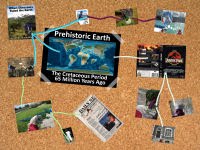


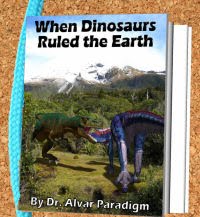
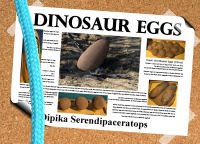
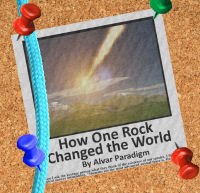
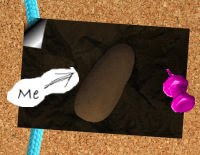

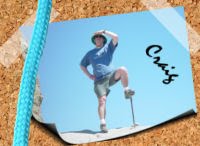


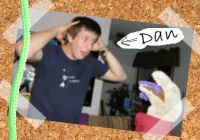
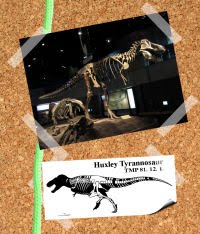
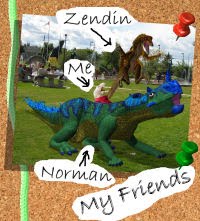

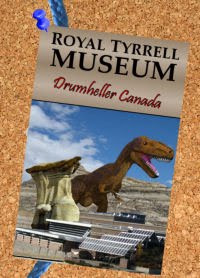
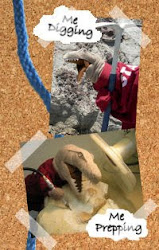
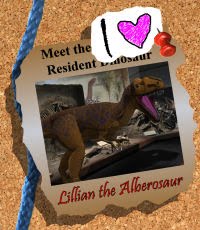


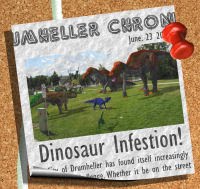
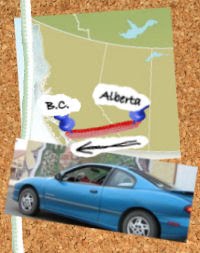




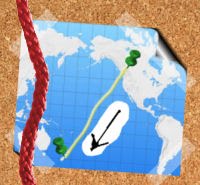

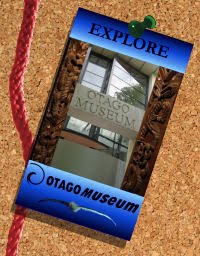


 you also can't help but see it in the rocks either when fossil/quarry hunting. this end of the
you also can't help but see it in the rocks either when fossil/quarry hunting. this end of the  not that you have to ID that many layers. more than half the major coal seams in the valley run through the east end of the valley. which is why so many more coal mines used to exist down here, than in
not that you have to ID that many layers. more than half the major coal seams in the valley run through the east end of the valley. which is why so many more coal mines used to exist down here, than in  though in the layers between the coal we do get a few fossils. these are funny enough not from land animals or plants at all though. rather shallow marine (aka ocean) critters. such as this clam.
though in the layers between the coal we do get a few fossils. these are funny enough not from land animals or plants at all though. rather shallow marine (aka ocean) critters. such as this clam.



 walking to the valley wall i decided to climb to the top. as this is the side of the badlands it has the highest
walking to the valley wall i decided to climb to the top. as this is the side of the badlands it has the highest  that sounded easier than it actually was though. man those hills are deceptively steep!
that sounded easier than it actually was though. man those hills are deceptively steep!


 which as a story is cool. which if your a geologist is cool. which if your a dinosaur fossil hunter is uncool...
which as a story is cool. which if your a geologist is cool. which if your a dinosaur fossil hunter is uncool... the glacial lake
the glacial lake 


 including this very promising gentle outcrop of ironstone scattered below sandstone.
including this very promising gentle outcrop of ironstone scattered below sandstone.
 my first find was an
my first find was an 

 a intact
a intact 
 this used to be the power point introduction for an educational program where kids at camp would help sort micro fossils for actual scientific research by
this used to be the power point introduction for an educational program where kids at camp would help sort micro fossils for actual scientific research by 

 while i was here, it was a great chance to "bone" up on my
while i was here, it was a great chance to "bone" up on my 
 however it did, and next thing i knew i had a very scary metre long head just in front of me with teeth bared. i returned the favour, not that it mattered much. my teeth were about as scary to him as someone pulling out a sewing pin at a mugging! each of his teeth were nearly half the length of my whole skull!
however it did, and next thing i knew i had a very scary metre long head just in front of me with teeth bared. i returned the favour, not that it mattered much. my teeth were about as scary to him as someone pulling out a sewing pin at a mugging! each of his teeth were nearly half the length of my whole skull!

 here is a bunch i found just today wandering a medium size coulee. this was the best clutch
here is a bunch i found just today wandering a medium size coulee. this was the best clutch  this is exactly the sort of fossil batch
this is exactly the sort of fossil batch 
 just as
just as 



 there are a few differences between these and the bone in my first journal entry.
there are a few differences between these and the bone in my first journal entry. which is what
which is what 
 hoisting myself up to the bone i looked in to examine it.
hoisting myself up to the bone i looked in to examine it. it may not have been an articulated skeleton
it may not have been an articulated skeleton  now as i found this
now as i found this  sadly there weren't any duplicate bones present on the surface. what means i couldn't find 2 of any one type of bone, such as two left femurs or two right wrist bones etc. if i could have, than i could confirm this was a
sadly there weren't any duplicate bones present on the surface. what means i couldn't find 2 of any one type of bone, such as two left femurs or two right wrist bones etc. if i could have, than i could confirm this was a 







